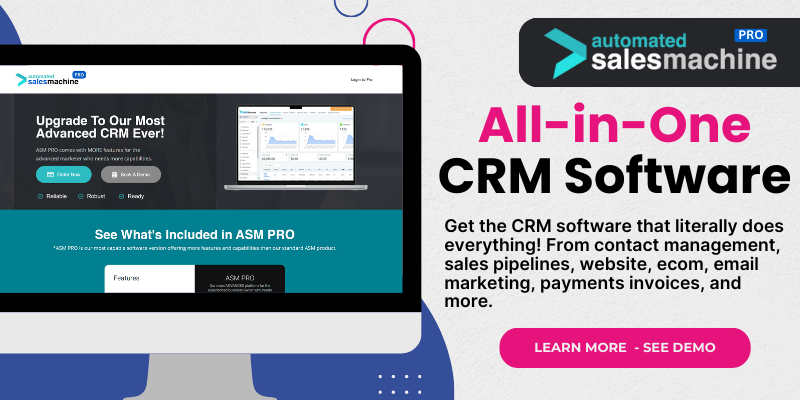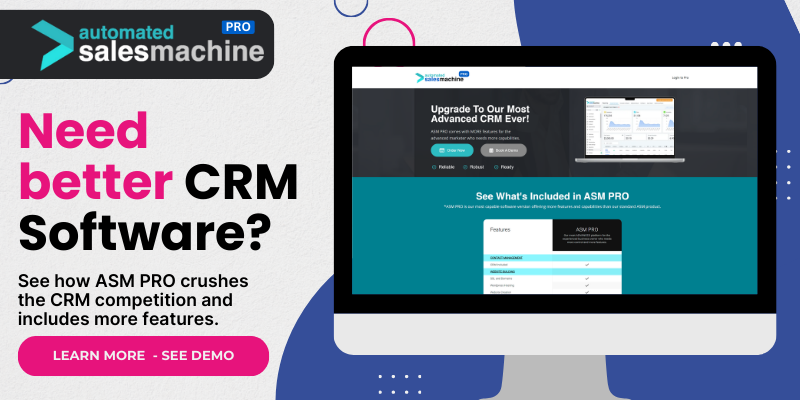Salesforce: The Stalwart Leader
Overview of Salesforce
You can’t talk about CRM software without mentioning Salesforce. It’s like the granddaddy of CRM systems, and for good reason. Salesforce provides a cloud-based platform that offers everything from lead management to analytics. It truly covers every aspect of CRM, which is why so many businesses, big and small, swear by it.
My first experience with Salesforce was a little overwhelming, to be honest. The interface has a lot going on, but with a bit of exploration (and some tutorials), I quickly got the hang of it. What I loved most was its flexibility. You can tailor it to suit your needs, whether you’re a startup or a Fortune 500 company.
That being said, the pricing can be steep if you want all the bells and whistles. But if you can justify the budget, the ROI from improved sales and customer insights can be phenomenal.
Key Features
One of the standout features of Salesforce is its automation capabilities. You can set up workflows that automate tedious tasks like follow-ups and report generation, which frees up time for your team to focus on actual selling.
Additionally, the extensive AppExchange marketplace lets you integrate various tools and applications. So if you run into a gap in your business processes, there’s a good chance there’s an app for that!
Not to mention, its robust reporting features provide insights that help you make data-driven decisions. Trust me, nothing beats the feeling of having all your data at your fingertips for quick analysis and adjustments.
User Experience
Initially, I found the learning curve for Salesforce quite steep. But once I got familiar with the UI, I appreciated its customization options. You can really make it feel like your own with dashboards and reports tailored to your business needs.
Salesforce also has excellent customer support through forums, documentation, and a knowledgeable support team. They’ve always been quick to help me with any issues I’ve run into, which is a huge bonus.
Overall, once I got over the initial hurdles, Salesforce became an indispensable tool in my kit—it’s a cornerstone for driving my business’s growth.
HubSpot CRM: The User-Friendly Option
Introduction to HubSpot CRM
If you’re new to CRMs and want something that’s super user-friendly, I can’t recommend HubSpot CRM enough. It’s like the friendly neighbor of the CRM world—simple, inviting, and yet packed with robust features.
HubSpot offers an entirely free version, which is fantastic for small businesses or startups just dipping their toes into customer relationship management. I was amazed by how much you can do without spending a dime.
One aspect I particularly love is its ease of integration with other HubSpot tools, like their marketing and sales software. This seamless connectivity takes the hassle out of managing multiple platforms.
Notable Features
The lead tracking capabilities in HubSpot are top-notch. As soon as someone interacts with your site, you can track their journey, which provides invaluable insights into what the customer wants.
Furthermore, HubSpot offers email templates and tracking features, which streamline communication. You can see who opened your emails and even when they clicked through to your website, which is a total game-changer for targeting your follow-ups.
Plus, their customizable dashboard gives you an at-a-glance view of your business performance—perfect for those quick check-ins when you’re short on time.
User Experience Feedback
From my experience, the learning curve is pretty much nonexistent. The interface is straightforward, and everything is laid out in a way that makes sense. Plus, it’s visually appealing!
If you ever get stuck, HubSpot’s knowledge base is vast, and they offer excellent tutorials to help you grasp any features you’re having trouble with.
Overall, HubSpot is a great tool for someone looking to get started without feeling overwhelmed. I’ve seen many businesses flourish using its features and ease of use.
Zoho CRM: The Cost-Effective Champion
What is Zoho CRM?
Zoho CRM is the perfect choice if you’re looking for a feature-rich option at an affordable price. I was pleasantly surprised by how many capabilities it packed into its pricing tiers, which cater to various budget needs.
With Zoho, you get robust sales automation tools, reporting, and even AI-driven insights. It’s like having an extra set of eyes analyzing your customer data without breaking the bank!
Plus, Zoho has an extensive suite of applications that integrate well together—if you’re a fan of an all-in-one solution, this is definitely worth considering.
Impressive Features
One of the highlights is the workflow automation. You can automate certain tasks, which helps in streamlining processes and saving valuable time. I love knowing that I can set things running in the background while focusing on what I do best—selling.
Another neat feature is the analytics. It provides plenty of options for data reporting and visualizations that help in understanding customer patterns and behaviors.
The mobile app is also quite handy. I’ve used it on the go, and it’s incredibly responsive—perfect for managing contacts or checking in on leads while traveling.
User Experience Insight
Initially, I found the interface slightly less intuitive than some other CRMs, but after a brief period of getting familiar, I was navigating through it like a pro.
Zoho offers great customer support, too—via chat and email, they have always been there to assist when I hit a bump in the road.
In the end, given its price and feature set, I believe Zoho CRM is a fantastic choice for businesses that need solid functionality without blowing their budget.
Microsoft Dynamics 365: The Comprehensive Solution
Introduction to Microsoft Dynamics 365
If you’re already in the Microsoft ecosystem, then Dynamics 365 is a no-brainer. The connectivity with other Microsoft products makes it incredibly beneficial, especially if you’re using Office 365 or Azure.
What I love about Dynamics 365 is how comprehensive it is—you’re not just getting a CRM; it’s a full suite for business applications that can handle sales, marketing, and customer service.
This unified platform means less hassle with data silos and a smoother experience across different functions in your organization.
Key Features
One key feature is the Artificial Intelligence integration, which helps in predictive sales analytics—it’s almost like having a crystal ball for your business!
The customization options are extensive as well. You can adapt the CRM to your specific industry needs, which I’ve found to be a real lifesaver in aligning with client expectations.
Integration with LinkedIn Sales Navigator is also a significant boost, providing a better way to connect with leads and prospects seamlessly—not to mention it enriches your contacts with actual LinkedIn data!
User Experience Overview
Generally speaking, using Dynamics 365 has been a smooth experience for me. The interface is clean, though it does have a bit of a learning curve in the beginning, especially if you’re new to Microsoft tools.
The support provided is quite good. They have tech support that’s very responsive, which I appreciate when I have a technical query or run into a problem.
In summary, if you’re looking for an all-encompassing platform and are willing to invest the time to master it, Microsoft Dynamics 365 offers great capabilities.
Pipedrive: The Sales Pipeline Specialist
What is Pipedrive?
Pipedrive is ideal if your primary focus is on sales processes. It’s designed around sales pipelines, which makes it super intuitive to use. I was drawn in by its straightforward functionality—no unnecessary frills.
It gives you a visual representation of your sales processes, which I find really helpful for tracking where opportunities are and what steps to take next.
Especially for teams focusing heavily on sales, Pipedrive consolidates the CRM and sales management experience like no other.
Core Features
The pipeline management feature is, without a doubt, my favorite. You can move deals through various stages with drag-and-drop, making it incredibly user-friendly.
Pipedrive’s automation tools are also robust—you can automate repetitive tasks, setting triggers that will alert you or execute actions based on lead activity or time triggers. Talk about efficiency!
Integration with communication tools is seamless too, whether you’re using email or connecting with your team through other platforms. It keeps everything you need in one place, which I find a great help in maintaining productivity.
User Experience Insights
The user experience with Pipedrive is refreshingly straightforward. It doesn’t overwhelm you with complexity or features you don’t need—everything feels very intentional.
Upon signing up, I was impressed with their customer onboarding process. They walk you through everything you need to get set up quickly, which is always a plus for me.
In summary, Pipedrive has polished sales-focused tools that can drive results if you keep your eyes on the prize—closing deals!
FAQs
1. What features should I look for in a SaaS CRM?
Look for user-friendly interfaces, automation capabilities, customization options, detailed reporting, and seamless integration with other tools. The right mix will depend on your business needs.
2. Are free CRMs any good?
Absolutely! Tools like HubSpot CRM provide fantastic free versions that offer essential features, making them a great starting point, especially for small businesses.
3. How important is mobile access to a CRM?
Very! If you or your team are frequently on the go, a CRM with a mobile app ensures you can manage customer relationships anytime, anywhere, which can significantly boost productivity.
4. Can CRMs help improve sales?
Yes! A good CRM will streamline your sales process, provide better insights into customer behavior, and help you automate tasks, aiding your team in closing more deals effectively.
5. How do I choose the best CRM for my business?
Assess your business needs, budget, and preferred features. It’s also useful to take advantage of free trials to get a feel of the software before committing.

